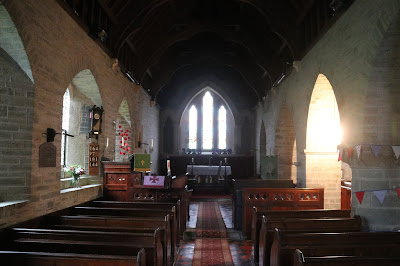It’s a measure of the disconnect between the Prime Minister and the public, indeed the rest of the world, that she imagines that this sort of manufactured exercise in walkaboutery is actually meaningful in any sense. It provides the form of listening to the people without any of the messy content of actually, errr, listening to the people. If she really wanted to hear what the people have to say, she could do. She could allow another referendum, but she’s not going to do that because, if she did and people voted not to leave the EU after all, she’d have to resign. In Theresaland, people are only allowed to voice their opinions when their opinions happen to be what Theresa wants to hear.
This pointless meet 'n greet 'n run away is precisely the opposite of listening to what the country has to say. It would be a far more productive use of everyone’s time if Theresa went off on one of her walking holidays and spent a fortnight chatting to some sheep deep in the countryside somewhere (near Stoke-on-Trent, perhaps?). We’d all get a break from her, and Theresa would have a receptive audience for a change. An audience which wouldn’t contradict her or have the wool pulled over their eyes.
It’s not just that Theresa May doesn’t want the public to have a say, she doesn’t want the House of Commons to have a say either. She had to be dragged screaming and kicking into allowing MPs a meaningful vote on her Brexit deal, and did her utmost to try and make the meaningful vote as meaningless as just about anything that ever comes out of Boris Johnson's gob.
She has fought tooth and nail against the legal attempt to get a European Court of Justice ruling on whether the House of Commons can unilaterally put a halt to the Article 50 process, without the permission of the rest of the EU. At every step along the way the British government has spent hundreds of thousands of pounds in legal bids to halt the proceedings.
Despite a vote being passed in the House of Commons telling the government to release the full legal advice that it has received on Brexit, Theresa has refused to do so. Instead her government has released a brief summary, which satisfies none of the opposition parties. The offer to release the summary was made by David Lidington, the Minister for the Cabinet Office, in an attempt to get the motion calling for a full release to be withdrawn. The motion wasn’t withdrawn, and passed unanimously after the government decided to abstain.
This, let’s not forget, is the same government that says it’s pursuing Brexit in order to restore the sovereignty of the British parliament. We now have a British government which claims to be working to restore full powers to the House of Commons, which is deliberately ignoring a binding vote taken by that same House of Commons obliging the government to do something it doesn’t like. That’s British sovereignty for you.
For a woman who says she wants to listen, Theresa is doing a very good impression of someone sticking her fingers in her ears and screaming la-la-la-la at the top of her voice. There comes a point when a refusal to listen, a determination to plough on regardless, crosses the line between strength of character and resolution and enters into pigheaded delusion. Theresa May and her hapless government crossed that line quite some time ago.
We’re reaching the end game now. The end game for Brexit, and the end game for this supposed United Kingdom. One way or another there’s going to be a vote, whether that’s a General Election or a second EU referendum. When that vote happens, Theresa May and the Conservatives will be made to listen. That’s going to be a listening exercise that really counts and really means something. Theresa is not going to like what the people of the UK have to say. And, as I've said previously, she's brought it on herself.
 |
| It all gets me frothing at the mouth! |


















































